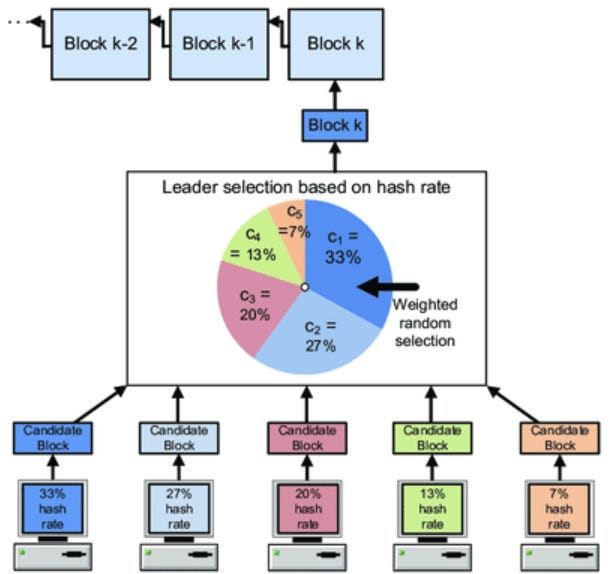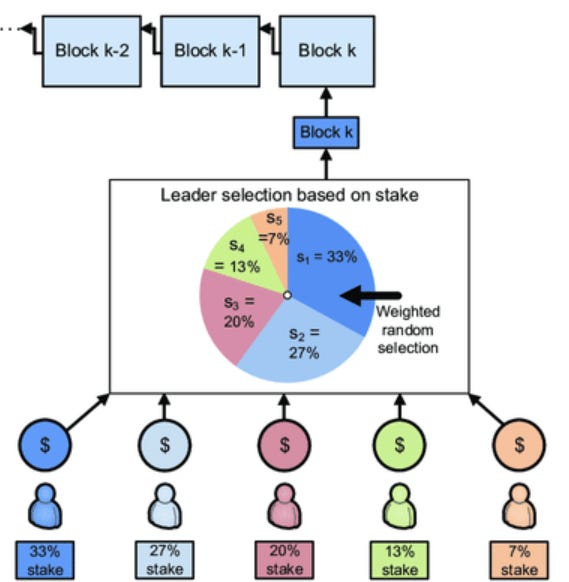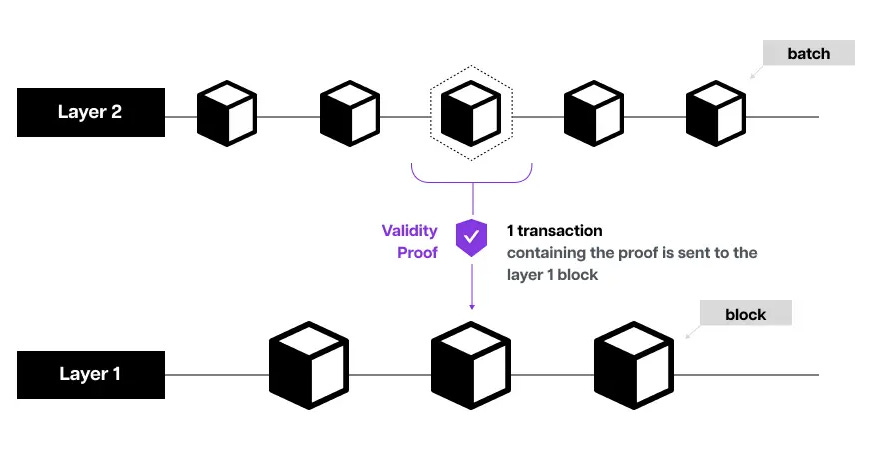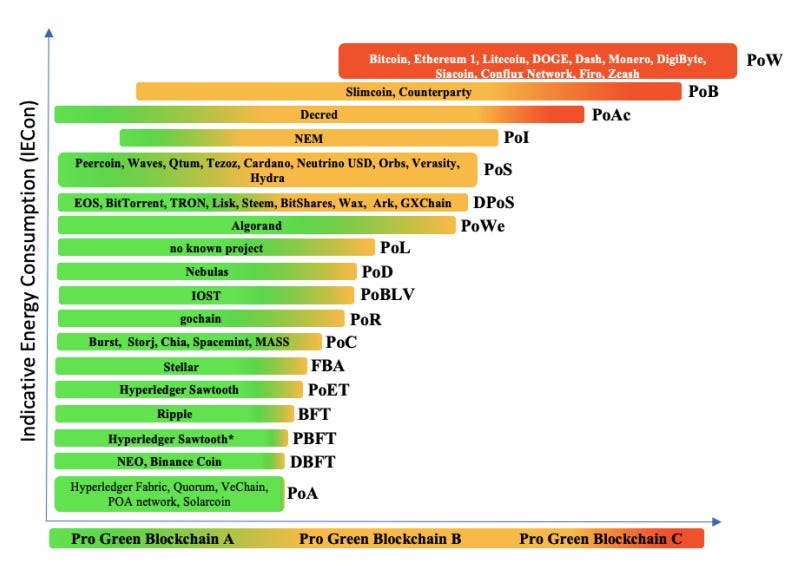Welcome back to our Blockchain & Web3 series! In earlier posts, we explored blockchain fundamentals; nodes, blocks, and transactions. As we gear up to discuss smart contracts, it’s important to first understand consensus mechanisms. These are the backbone of blockchain, ensuring its security, reliability, and decentralized nature.
In this post, we’ll dive into the key consensus mechanisms: how they work, why they matter, and their connection to modern scaling solutions like Layer 2 technologies. We’ll also look at how AI might shape their future.
What Are Consensus Mechanisms?
At its core, a blockchain is a decentralized ledger with no central authority to validate transactions. Consensus mechanisms ensure participants (nodes) agree on the validity of transactions and the ledger's state.
These systems prevent issues like double spending and protect against malicious actors. Let’s explore the most widely used methods.
Popular Consensus Mechanisms
1. Proof of Work (PoW)
In PoW, miners compete to solve cryptographic puzzles by repeatedly hashing data. The first to solve the puzzle broadcasts the solution, which is then verified by others. If valid, the block is added to the chain, and the miner earns a reward.
Key Components:
Hash Function: Maps input data to a fixed-length output (e.g., SHA-256 in Bitcoin).
Nonce: A number miners adjust to generate different hash outputs.
Difficulty Adjustment: Maintains consistent block creation times.
Strengths:
Highly secure through computational difficulty.
Proven reliability (e.g., Bitcoin).
Challenges:
Energy Use: High computational power leads to environmental concerns.
51% Attack Risk: A single entity with over 50% mining power can rewrite blockchain history.
Centralization: Mining often consolidates in regions with cheap electricity.
Latency: Slower transaction speeds limit suitability for high-volume applications.
2. Proof of Stake (PoS)
In PoS, validators “stake” cryptocurrency as collateral to propose and validate blocks. Validators are chosen based on their stake size, time staked, and sometimes randomization. Misbehavior can result in a loss of their staked funds.
Key Components:
Staking Pools: Small holders combine resources to participate.
Slashing Conditions: Validators lose funds for malicious actions.
Checkpointing: Finalizes the blockchain and prevents forks.
Strengths:
Energy-efficient.
Faster and more scalable than PoW.
Challenges:
Centralization risks if wealthier participants dominate.
Penalties can deter participation.
Layer 2 Solutions: Scaling Blockchain
Layer 2 solutions, like zk-rollups, process transactions off-chain while relying on the main blockchain (Layer 1) for validation. This reduces the workload on Layer 1 while maintaining security.
Benefits:
Higher transaction throughput.
Lower user fees.
Reduced computational and energy demands.
Emerging Alternatives
Blockchain continues to innovate beyond PoW and PoS with new consensus mechanisms:
Delegated Proof of Stake (DPoS): Token holders vote for validators.
Pro: Fast transactions, lower costs.
Con: Risk of centralization.
Proof of Authority (PoA): Trusted validators manage private or permissioned blockchains.
Pro: High efficiency.
Con: Limited decentralization.
Proof of Elapsed Time (PoET): Randomized validator selection for energy efficiency.
Directed Acyclic Graphs (DAGs): Transactions validate each other instead of using blocks.
Pro: High scalability, ideal for IoT (e.g., IOTA).
Hybrid Models: Combine mechanisms for scalability, security, and decentralization.
Example: Solana uses PoS and Proof of History (PoH).
Why Consensus Mechanisms Matter
Consensus mechanisms define a blockchain’s:
Security: Protect against attacks and ensure valid transactions.
Trust: Enable decentralized systems without relying on intermediaries.
Scalability: Handle growing transaction volumes.
Sustainability: Address energy consumption for long-term viability.
Energy and Sustainability
Energy consumption is a growing concern in blockchain. While PoW is powerful, it’s one of the most energy-intensive mechanisms, contributing to environmental challenges. Transitioning to more sustainable consensus methods is crucial for blockchain’s long-term viability.
Energy Profiles of Popular Consensus Mechanisms:
Proof of Work (PoW):
Energy Usage: Extremely high due to computational demands.
Examples: Bitcoin, Ethereum 1 (pre-Merge).
Trade-offs: Exceptional security at the cost of scalability and environmental impact.
Proof of Stake (PoS):
Energy Usage: Far lower, as no heavy computations are needed.
Examples: Ethereum 2, Cardano, Solana.
Trade-offs: Scalable and eco-friendly but requires efforts to prevent centralization.
Delegated Proof of Stake (DPoS):
Energy Usage: Minimal due to reliance on a small number of validators.
Examples: EOS, TRON.
Trade-offs: Efficient and fast but can lead to centralization risks.
Proof of Authority (PoA):
Energy Usage: Negligible.
Examples: Hyperledger Fabric, VeChain.
Trade-offs: High efficiency but limited decentralization.
Best Practices for Sustainable Blockchain Solutions
To balance scalability, security, and environmental impact, consider the following:
Scalability with Efficiency: Use consensus mechanisms that handle high transaction volumes without proportional energy increases.
Eco-Friendly Initiatives: Choose networks supporting renewable energy use or carbon offset programs.
Regulatory Compliance: Adopt solutions that align with emerging green energy regulations.
AI Integration: Leverage AI to optimize network operations and reduce energy usage.
Community Innovation: Support ecosystems that foster sustainable validation techniques, like Ethereum’s transition from PoW to PoS.
Conclusion
Consensus mechanisms are the foundation of blockchain’s security, scalability, and decentralization. Whether it’s the robust yet energy-intensive PoW or the scalable and eco-friendly PoS, each mechanism serves specific use cases. The adoption of Layer 2 solutions and emerging hybrid models demonstrates the blockchain industry’s focus on balancing performance and sustainability.
As blockchain technology evolves, energy efficiency and innovation will remain critical for its growth. Whether you’re exploring blockchain for DeFi, NFTs, or IoT, understanding consensus mechanisms can help you make informed choices.
Next, we’ll explore Introduction to Smart Contracts, the programmable backbone of blockchain. Learn how they work, their real-world applications, and how platforms like Ethereum and Solana are shaping decentralized technology.
To dive deeper into this topic, check out the full article on Medium. Let’s keep building smarter, safer systems, one step at a time.






